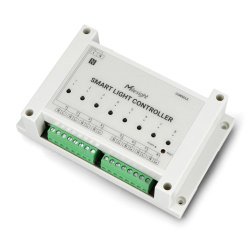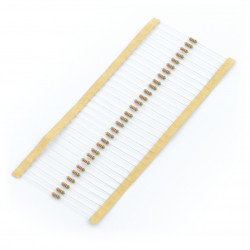With the development of various fields of technology, measuring systems find application wherever high accuracy is required in measuring such energy parameters as the intensity of the electric current. Motor drivers, charging stations, electric vehicles, measurement systems, design and protection automation in the energy sector of traditional and renewable energy, as well as laboratory equipment for scientific purposes-training, this is one of the many applications in which the key factor is the accuracy in current measurement. From components and design of a measuring system requires a very good stability, even in the most adverse environmental conditions.
Grove - current sensors
Grove AC-Voltage sensor - RMS AC voltage sensor - MCP6002 - Seeedstudio 101991032
The sensor is equipped with the MCP6002 system and is designed to measure the rms value of AC voltage . It has adjustable gain for various voltage inputs from 120 V to...Grove - AC current sensor TA12-200
The sensor measures the intensity of the current flowing in the pipeline without its opening. Measurement occurs through the insulation on the one wire, output is the current...Grove - Lightning Sensor - AS3935 - Seeedstudio 101021072
The Grove AS3935 sensor is an advanced, easy-to-use sensor that can detect both cloud-to-ground and intra-cloud lightning , up to a 40 km radius. It communicates via the...See also
- Grove - starter kits
- Grove - base hats
- Grove - accelerometers and gyroscopes
- Grove - actuators
- Grove - gas & dust sensors
- Grove - medical sensors
- Grove - distance sensors
- Grove - weather sensors
- Grove - force sensors and limit switchers
- Grove - light and colour sensors
- Grove - LED
- Grove - sensors and potentiometers
- Grove - converters
- Grove - communication modules
- Grove - sound modules
- Grove - relays
- Grove - cables
- Grove - buttons, keys and joysticks
- Grove - motor drivers
- Grove - displays
- Grove - covers and accessories
Current measurement using sensors magnetorezystancyjnych
The IP of magnetoresistive sensor devices designed to detect the presence of a magnetic field. Such sensors, including the Grove sensor modules for measuring electrical current, do not require galvanic connection to the circuit in which it is necessary to measure current and consume very little electricity required to perform the measurements, which in combination with their small size allows their installation in embedded systems, such as, for example, Arduino. Effect magnetorezystancji is detecting the magnetic field, which penetrates the element czujnikowy changes its resistance. The sensor resistance increases or decreases depending on the direction of the impact of magnetic field lines depending on the current flow. The IP of the magnetoresistive sensors are characterized by a high measurement accuracy relative to the Hall sensors. The store Botland, you can find a wide range of sensors magnetorezystancyjnych suitable for Your project - perfect for these purposes will approach the Grove sensor modules. The IP of the magnetoresistive sensors can also be used to detect the presence or change of position of an object, such as a safety switch, an electric treadmill.
Current measurement based on Hall effect - also from Arduino
Current sensors, whose principle of operation is based on phenomenon of Hall, consist of a magnetic core, which, thanks to intelligent energy storage in a magnetic field supports the measuring signal and of the right Hall sensor - hallotronu, which is set at the correct angle in order to concentrate on indukowanym magnetic field using the current flowing the wire. As a result, there is a Hall voltage, whose value is proportional to the measured energy. AC current measurement using a single base Arduino tiles can be difficult to accomplish. Problem is solved by connecting the Arduino to snap Grove TA12-200, which allows you to measure current up to 5A. Reaper works on the principle of Hall effect, so that its design allows the measurement of direct and alternating current. Most sensors DC uses in its principle the phenomenon of the Lobby, which allows the sensor to measure DC and AC current. The DC sensors provides a measurement of the current flowing in both directions, but can also be adapted to measure current flowing in one direction only.



















































































































































































































































































































































